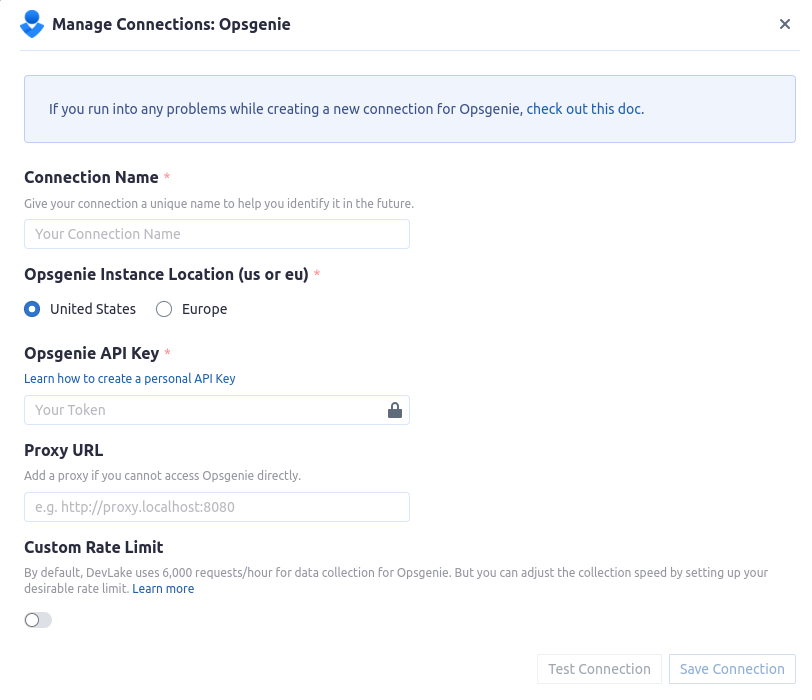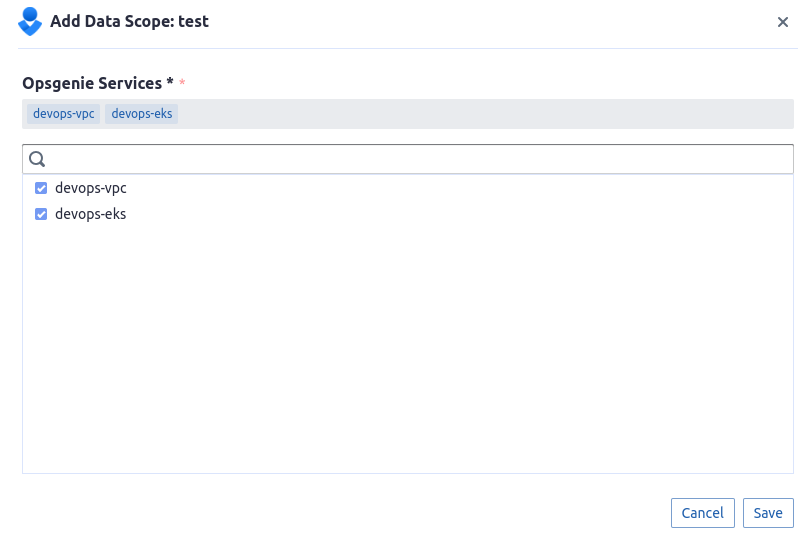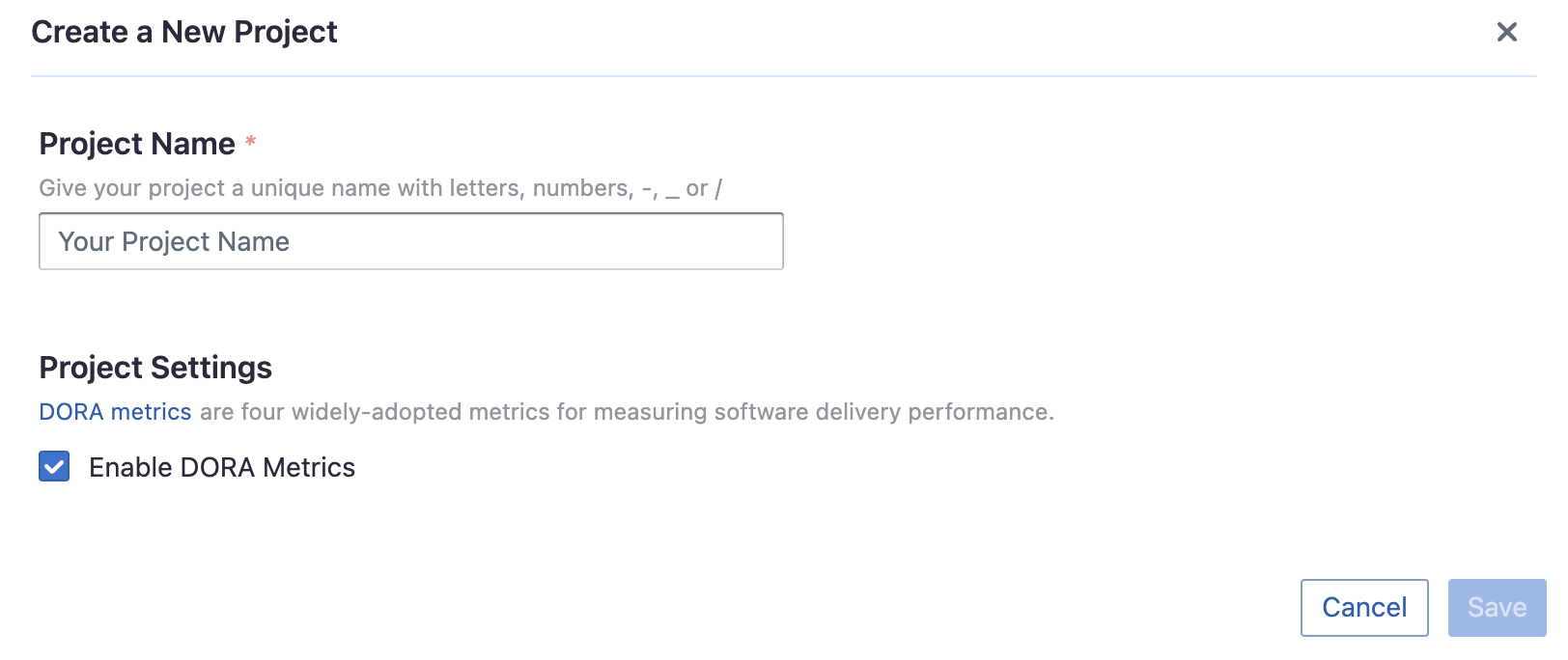Opsgenie
Visit Config UI at: http://localhost:4000.
Step 1 - Add Data Connections
On the Connections page, you can select Opsgenie and create a new connection on it.
Step 1.1 - Authentication

Connection Name
Give your connection a unique name to help you identify it in the future.
Endpoint URL
Opsgenie makes available two types of REST API endpoints, US and EU, eg. https://api.opsgenie.com/ or https://api.eu.opsgenie.com/. You can choose wich instance by selecting the due radio input.
API Access Key
In the API key management section of your Atlassian Opsgenie account settings, you can create a API key to manage your requests.
Learn about how to create a Opsgenie API key. The following permissions are required to collect data from repositories:
ReadCreate and UpdateConfiguration Access
Proxy URL (Optional)
If you are behind a corporate firewall or VPN you may need to utilize a proxy server. Enter a valid proxy server address on your network, e.g. http://your-proxy-server.com:1080
Fixed Rate Limit (Optional)
DevLake uses a dynamic rate limit to collect Opsgenie data. You can adjust the rate limit if you want to increase or lower the speed.
Opsgenie doesn't establishes a maximum rate limit for its API request, thus you should check this detailed doc on how to calculate your rate limit, based on number of user and account plan that you hired. For now, the default rate limit is in 6,000 request/hour (100 request/minute).
Test and Save Connection
Click Test Connection, if the connection is successful, click Save Connection to add the connection.
Step 1.2 - Add Data Scopes
Services
Choose the Opsgenie services you wish to collect either by finding them in the miller column, or searching.

Step 2 - Collect Data in a Project
Step 2.1 - Create a Project
Collecing Opsgenie data requires creating a project first. You can visit the Project page from the side menu and create a new project by following the instructions on the user interface.

Step 2.2 - Add a Opsgenie Connection
You can add a previously configured Opsgenie connection to the project and select the boards for which you wish to collect the data for. Please note: if you don't see the services you are looking for, please check if you have added them to the connection first.

Step 2.3 - Set the Sync Policy
There are three settings for Sync Policy:
- Data Time Range: You can select the time range of the data you wish to collect. The default is set to the past six months.
- Sync Frequency: You can choose how often you would like to sync your data in this step by selecting a sync frequency option or enter a cron code to specify your prefered schedule.
- Skip Failed Tasks: sometime a few tasks may fail in a long pipeline; you can choose to skip them to avoid spending more time in running the pipeline all over again.

Step 2.4 - Start Data Collection
Click on "Collect Data" to start collecting data for the whole project. You can check the status in the Status tab on the same page.

Troubleshooting
If you run into any problem, please check the Troubleshooting or create an issue